
Cross Helmet X1 – A Brutal Review of Smart Helmet with HUD
left for contents
Is the CrossHelmet X1 a next generation motorcycle helmet design ahead of its time or a marketing gimmick?
The CrossHelmet promises to teleport you in to Tron, with a HUD (heads-up display), rear-view camera, built-in Bluetooth intercom, and brake light among other “smart motorcycle helmet” features aimed at improving rider safety.
It sure looks the part of a next generation motorcycle helmet – but does it deliver?

Our team dug in to the details to get to the truth behind this lid. In this post we’ll explore:
- The story of the CrossHelmet
- What you get with the X1 vs traditional motorcycle helmets
- The technology in the X1
- The X1’s best competition on the market (the Sena Stryker – a MUCH better alternative)
Then we’ll answer the questions we hear a lot when talking about the CrossHelmet X1.
Let’s gear up and get into it.
What is the CrossHelmet X1?
The CrossHelmet X1 started life back in 2017 as a Kickstarter campaign promising a next generation motorcycle helmet (1). A Japan-based company named Borderless launched the helmet to provide riders with a safer, more connected riding experience.
They wanted you to be able to see your riding directions displayed right in front of you, and view traffic behind you without having to look at your mirrors. They wanted to give you great “sound management” (i.e. noise cancelling) speakers to deliver music, calls, and directions right to your eardrums without the pesky sound of a semi-truck approaching.
And they wanted you to be able to connect to your smartphone because nothing does music, maps, calls and more better than an iPhone (sorry Android fans, it’s just true).
They wanted to make the “smartest motorcycle helmet ever” (1). And the price point shows they think they achieved that.
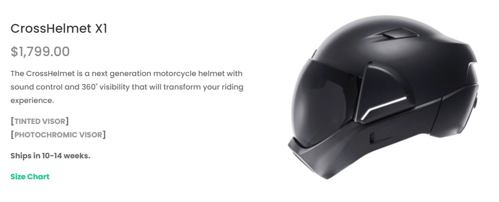
The X1 comes in matte or gloss black, takes 10-14 weeks to ship (who has time for that?), and is (allegedly) DOT and ECE certified. It might sound good, but at a shocking price of $1,799 – is it worth the price of a small motorcycle?
CrossHelmet X1 Standard Features
Before we look at the bells and whistles on the CrossHelmet X1, we should look at how it’ll perform its main job – keeping your brain in the right place.
CrossHelmet X1’s Shell
The shell of the CrossHelmet is made from ABS and LEXAN polycarbonate, which is normal polycarbonate that’s trademarked by GE Plastics (3). I’d expect a lid that costs as much as a MotoGP racer’s equipment to sport at least fiberglass? Hell, this lid should have Vibranium at $1800.
Why the hate? Polycarbonate is the cheapest and least protective type of shell material. Up to a certain stress point, it’s okay – it’ll absorb impacts. But past a certain point (that’s different for every blend of plastic) it simply snaps. Boom, there goes your protection. Now 100% of that force is going straight to your cranium.
That’s why most lids over $300 nowadays use blends of fiberglass, aramid, Kevlar and carbon-fiber. These materials are not only lighter than polycarbonate, they progressively crack on impact which helps diffuse impact forces.
Same idea behind the “bed of nails” – a polycarbonate helmet in a serious crash is like stepping on one nail. Ouch. Straight through you.
An aramid blend helmet is more like stepping on a bed of nails. Might hurt a bit, but because your weight is distributed across many points, the force on each individual point is reduced. Less chance at blood and brain damage. You might just walk away.
On top of the weak protection in this helmet, the wind noise while riding in it is awful. You’d think for a lid that costs more than a small motorcycle, they’d deal with wind noise and environmental sounds more effectively.
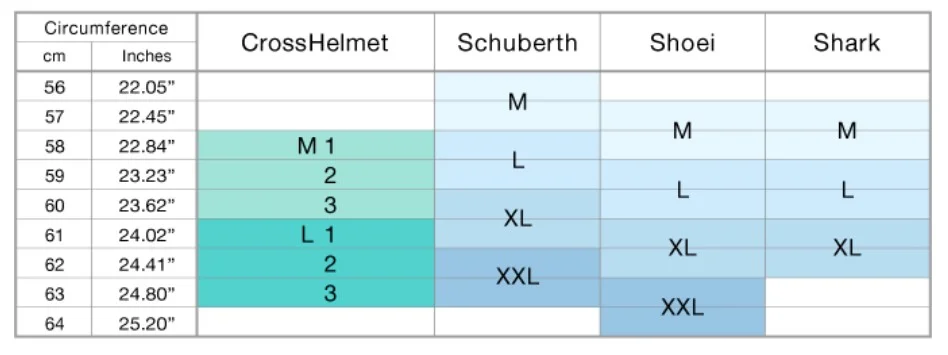
You can choose from two shell sizes which are used to make three helmet sizes each. The sizes are M 1-3 and L 1-3. It feels unnecessarily confusing when it could have been XS, S, M… You get the picture.
Padding in the CrossHelmet
The next layer down from the shell is foam. “Foam” is pretty much all we know. The company’s website and promotional materials don’t give any more details, so we have to guess this is again standard (and cheap) EPS foam.
From what I’ve seen and heard, this foam is worse than the polycarbonate exterior. Feels like the team took a break from doing no work at all to go over to China, find a packing peanuts factory, and stuff some of their produce into this $1800 lid.
The inner padding is pretty bulky, especially around the ears. The material feels cheap and while they say it’s machine washable… at this point I don’t trust anything this team says. Of course if machine washing does turn it in to dust, you can pay another $49 of your hard earned money to this company for a replacement padding set.
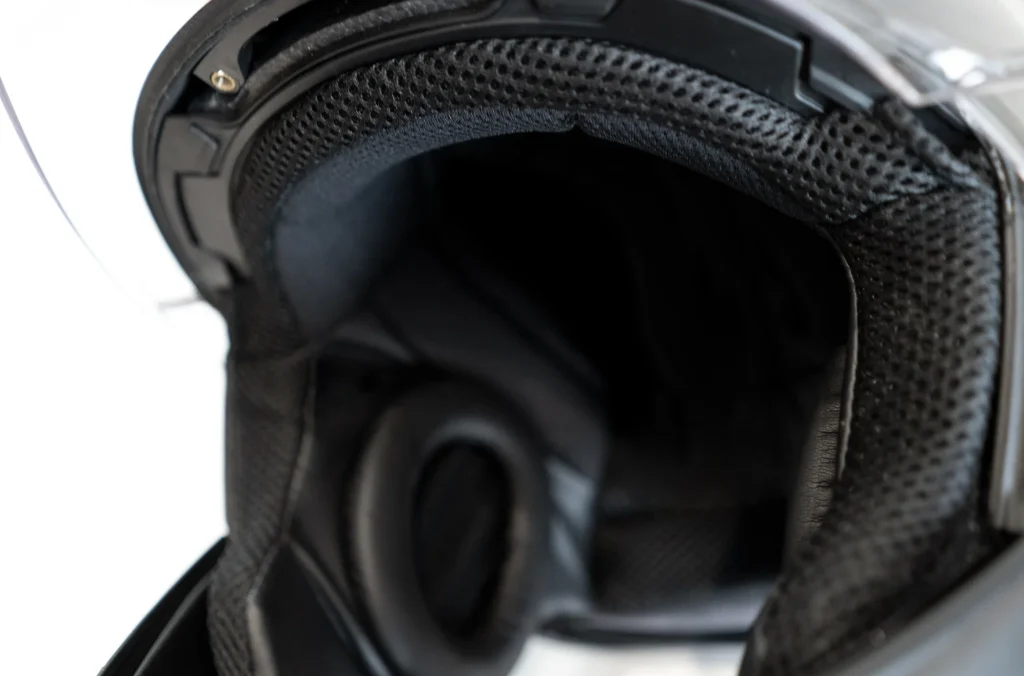
Visor
The visor on the X1 has three tint options and you get two in the box. It claims to be anti-fogging, but like most things this company claims, it’s just not true. The visor quickly fogs up with a small temperature difference and a bit of warm breath.
One thing that really sticks in the throat about the CrossHelmet – when you consider the price, you don’t even get a visor button or handy notch. You’ve got to put your hand on the visor and pull it up and down, making it easy to smudge up your view.
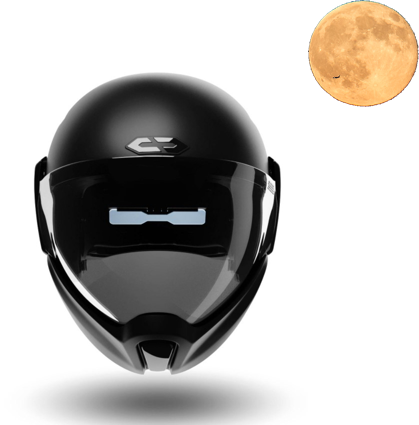
You do get a decent field of view, which is one of the main selling points of the helmet. You better hope you remember your tinted visor, though, because you can’t wear sunglasses and see the HUD.
Controls and App
The helmet’s discreet touch panel on top of the visor connector works like a trackpad; you can run your fingers along it to control volume, calls, and more.
On top of the touchpads, you also get a pair of LEDs, adding a little extra visibility when you’re cruising at night.
All decent, but not enough to justify the absurd price. Use a wheel or buttons like Sena or Cardo and cut the price down to something relatively affordable.
You can also download the Crosshelmet app for iOS and Android which lets you control a range of settings including for the speakers, which unfortunately are not great quality according to reviews. You get a few basic settings and “CrossSound Control” which as far as I can tell doesn’t actually change the sound in the helmet.
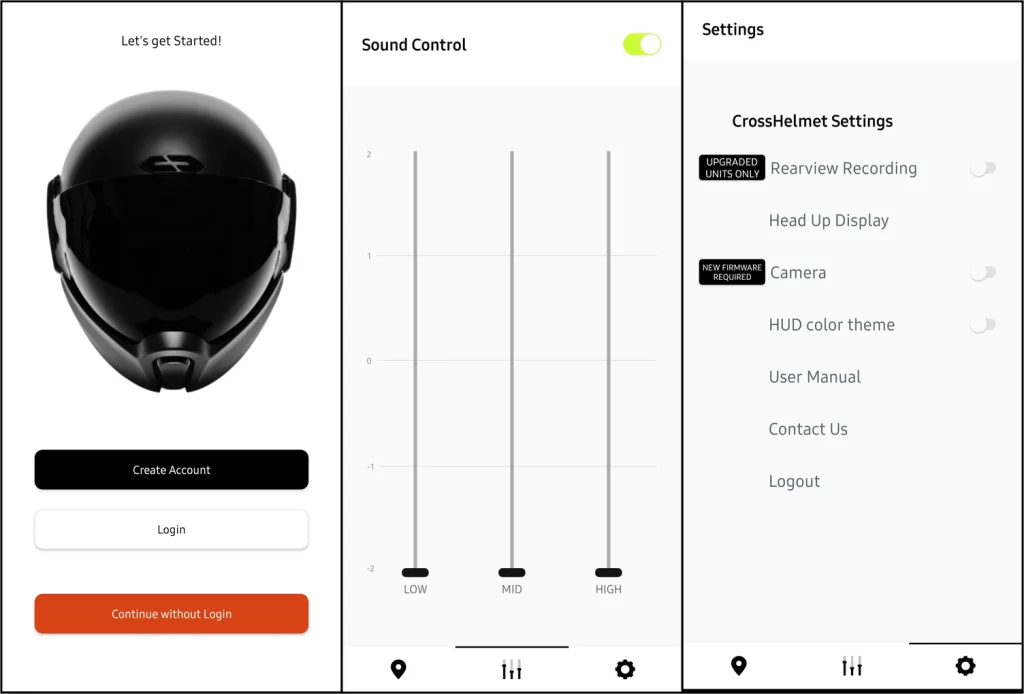
Now for the tech that the app controls.
Technology in the CrossHelmet X1
Tech is what CrossHelmet trades on. It attempts to wow you with cool-sounding features, but do they work and are they useful? What have the Crosshelmet’s supposedly world class engineers put in to this?
CrossHelmet – The Smart Motorcycle Helmet with HUD
The integrated head up display sits at the top of your field of vision, like a rear view mirror in a car. It connects to the rear camera mounted at the back of the lid, letting you see everything going on behind you. Of course no mention of how useless that is with multiple riders on the bike – you’ll just get a view of your pillion’s face.
You can overlay GPS directions or weather updates to the display, too. These are all great ideas to reduce rider fatigue, but only if they work.
Here are some of the issues you’ll find with the HUD:
- It’s not sturdy and will bounce about, so it’s hard to focus
- If you’ve got a passenger, you’ll only see their visor behind you
- In sunlight, the display is impossible to see
- You can’t wear your shades and see the display
- Maps only work with the CrossHelmet apps, which only shows distances in KM
- The rear view camera image is blurry at any kind of speed, due to vibration of the helmet.
In theory the HUD eliminates blind spots and extends your field of vision to 360°. In reality, where we actually live and ride, all you get is a blurry and distracting tiny screen always hovering over the corner of your eye.
CrossHelmet X1’s Sound Control
The CrossSound Control is a noise cancellation feature. It should allow you to choose if you want to suppress or enhance environmental sounds. You can be aware of your surroundings in the city or cancel out engine noise on a country road, for example.
In short, it’s a gimmick. The shell itself is so poorly constructed that the wind noise alone drowns out any effect the tiny speakers could have. So much for a “patented noise control system”.
Alternatives to CrossHelmet X1
None of this sounds all that appealing, so we’re going to look at how you can achieve similar results that don’t cost an arm and a leg with new Sena helmets.
Helmet with Integrated Bluetooth – Sena Stryker
Okay if you haven’t gotten the picture yet, the X1 sucks. I wouldn’t wear this if someone paid me $1800 to wear it. A pizza box would probably provide more protection.
That said, this isn’t the end of the line for smart helmets in the motorcycle industry. Thankfully we have a motorcycle industry juggernaut producing standout smart lids for years: Sena.
Sena’s latest iteration in a long line of helmets with an integrated Bluetooth communication device is the Sena Stryker.

This helmet has a fully-integrated Bluetooth speaker and microphone system, plus:
- Best-in-Class Bluetooth Intercom: connect over 2km / 1.2 miles away with Mesh 2 and Bluetooth 5.0
- A built in tail light (just like the CrossHelmet X1)
- Premium speakers and microphone by renowned auto audio company Harman Kardon
- Up to 17 hours of battery life
- A composite fiberglass shell and multi-density EPS foam for great safety
- A sturdy neck roll and a chin curtain for internal noise reduction
- DOT and ECE certification

In short with the Sena Stryker you get a REAL HELMET with all the smart bits of a top-notch Bluetooth intercom and entertainment system hidden away inside the lid.
If you feel let down by the CrossHelmet X1, save yourself $1000+ and a trip to the hospital by picking up the Sena Stryker.
Sena Stryker: One third of the price, with THREE HUNDRED TIMES the quality and features.
Tip: Make sure the helmet fits snug to avoid the noise issues reviewers complain about. All too often noise results from a helmet that’s too large for the head it’s on. Read our fit guide to learn how to properly fit a helmet to your head!
Create Your Own Smart Motorcycle Helmet with HUD
You can add a HUD to your helmet without having to buy an expensive new lid.
The Argon Transform adds 150g to your current helmet and can easily be fitted without drilling, so no compromise to your shell’s integrity.
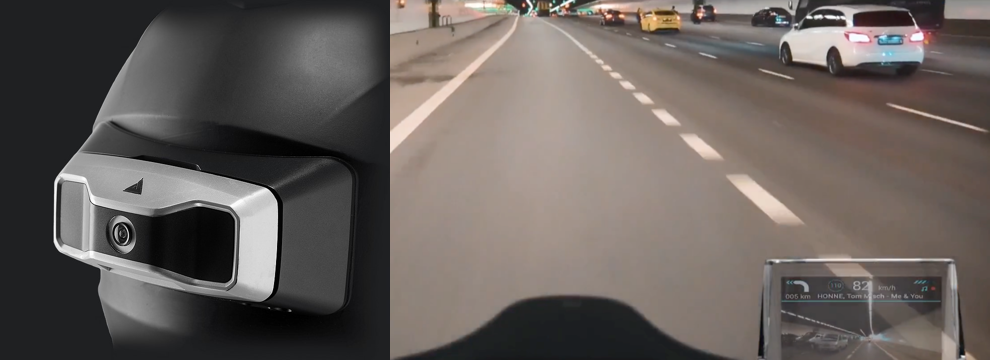
Another mod you can do for less money is to add a motorcycle dashcam.
This one from VSYSTO adds a camera to the front and back of your motorbike plus a display that can be fitted around your dials.
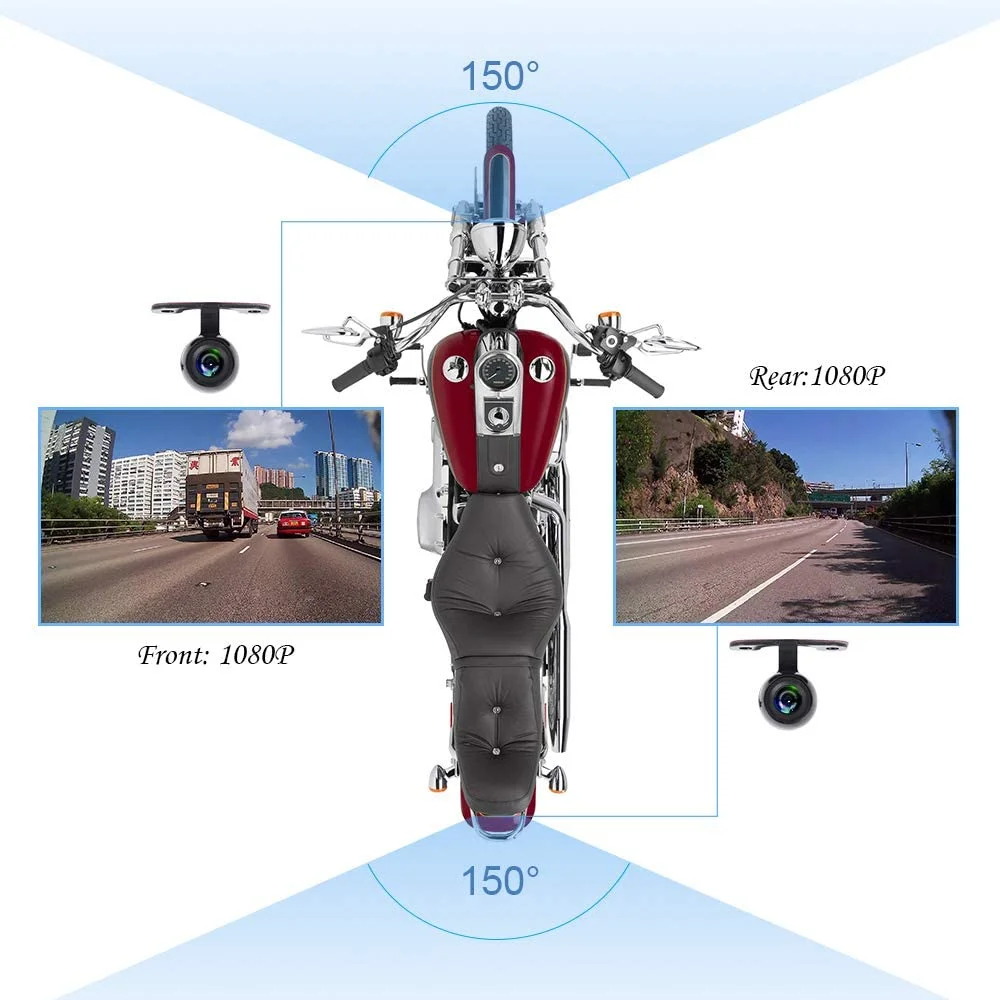
What We Think About the CrossHelmet X1
We reckon the CrossHelmet X1 belongs on the list of failed smart helmets along with the Skully, which you’ve probably heard about.
For the huge price, build quality isn’t up to expectations. It’s fiddly to get working with the tech; one day, when the app isn’t supported anymore, you’ll be left with a shiny panel above a big visor.
Pros
- You do get a much broader view – the camera offers 170° rear view
- The front of the helmet is very open, again enhancing your peripheral vision
Cons
- It’s heavy at 1920g
- A full charge can only last about 4-6 hours
- The shell and build quality just isn’t what you want when you spend nearly $2,000
- You can’t use the rear camera when you have a passenger
- There’s not a lot of airflow so it gets sweaty
FAQs About the CrossHelmet X1
What’s the best smart helmet?
The best smart helmet is the Sena Stryker, with a fully integrated Bluetooth system that lets you talk to up to four other riders over Bluetooth or limitless over Mesh. Plus, you can connect it to your phone for GPS, music, and calls. Since all the electronics are hidden within the helmet shell itself, this lid gets a whopping 17 hours of battery life per charge.

Is CrossHelmet real?
Yes, CrossHelmet is a real helmet that has been produced and shipped. The features are all present when you receive it, but aren’t very easy to use or of very high quality. It’s produced in Japan and is available on Kickstarter and the company’s website.
How much is the CrossHelmet?
CrossHelmet costs $1,799 for the basic unit including two visors. Shipping to the US costs $145. Not cheap.
What happened to Skully?
The company that produced the Skully smart helmets shut down and declared bankruptcy in 2016. Skully produced a helmet with the same rear-camera concept as CrossHelmet. The company reportedly wasn’t able to fund a production run (5) or settle supplier invoices (6).
Related

7 Helmets Women Riders Swear By
Smaller shells, better fit, real comfort—these helmets are built for women who ride. No more compromise, just protection, style, and a proper fit.



Toze
1 year ago
Em Portugal onde posso comprar e qual o seu preço
Evan Rally
1 year ago
O site deles está aqui, mas é um capacete terrível
https://www.crosshelmet.com/